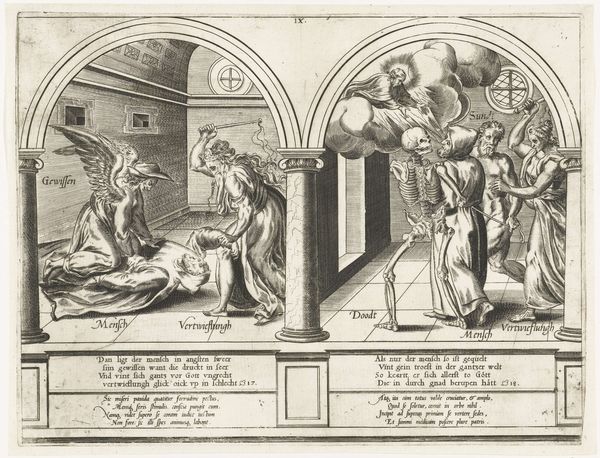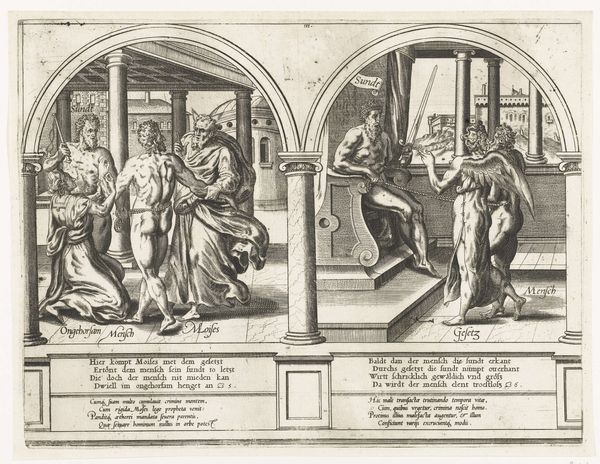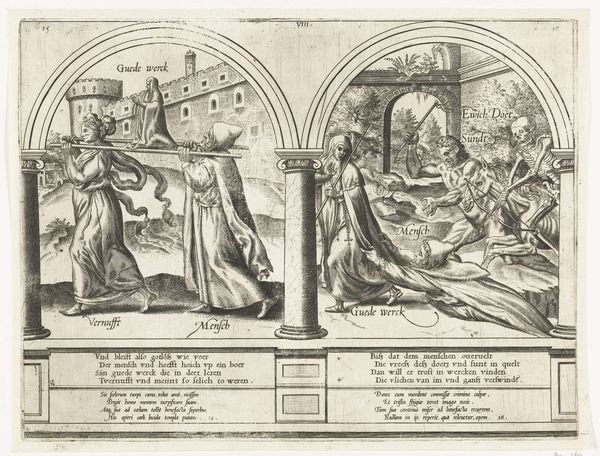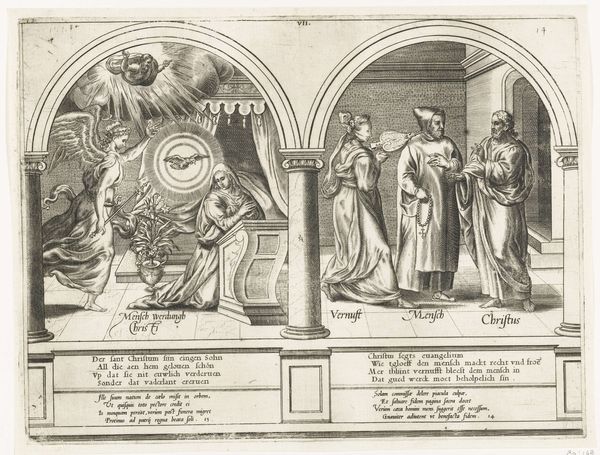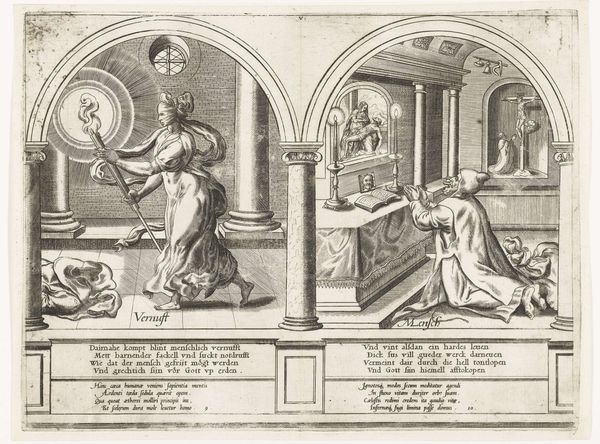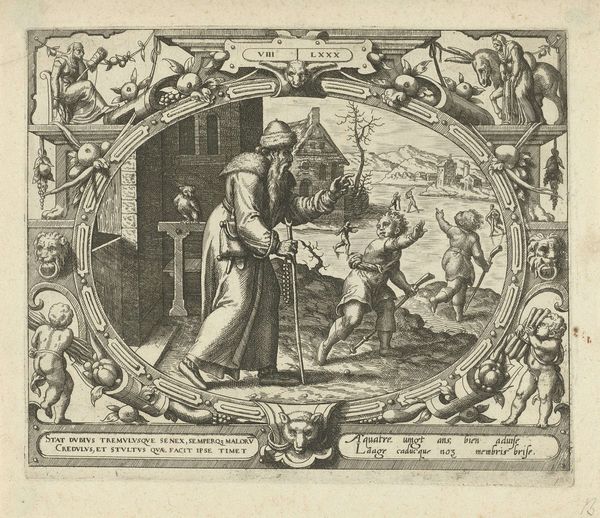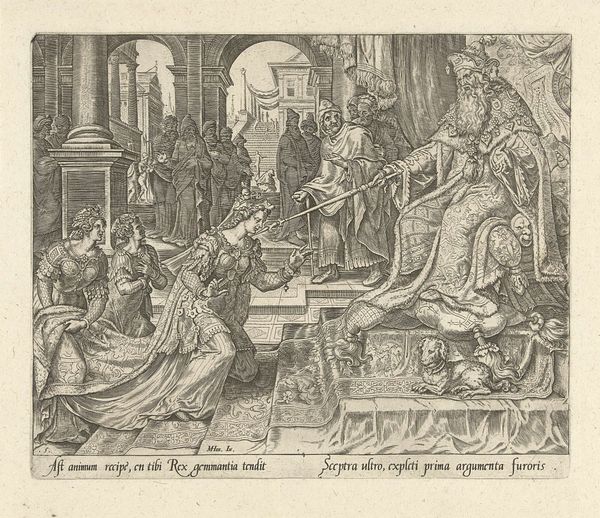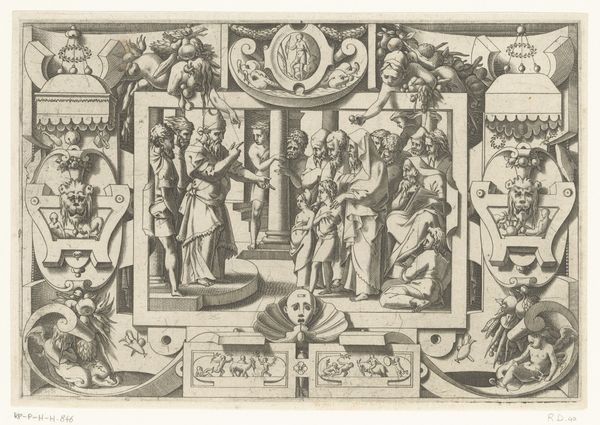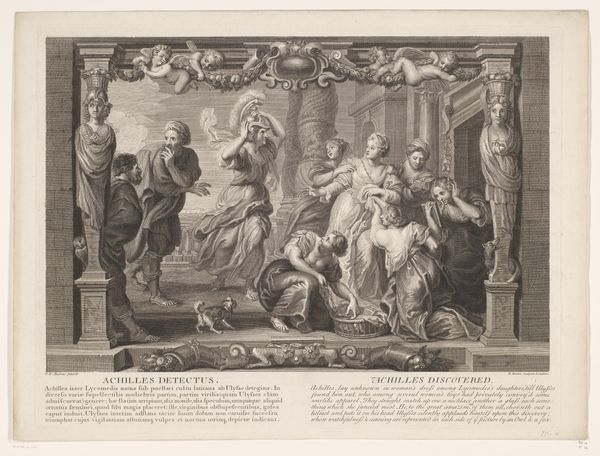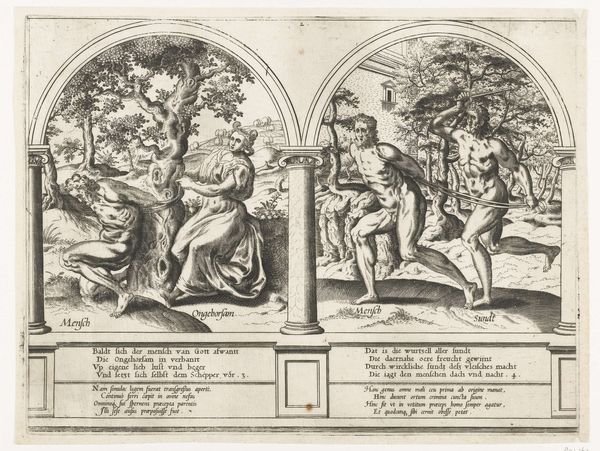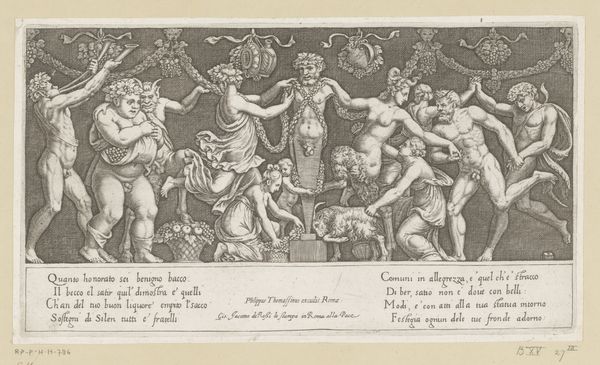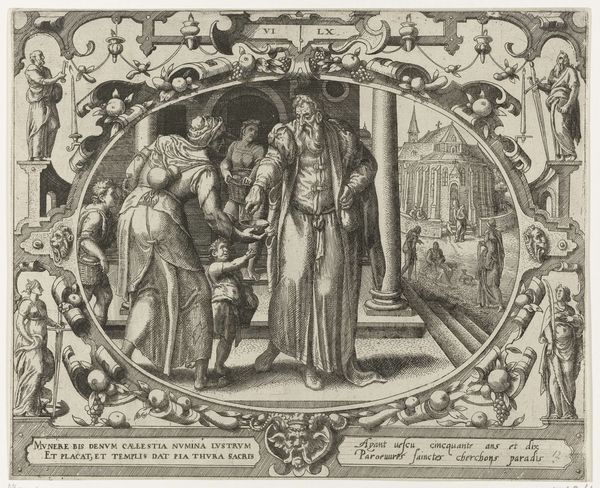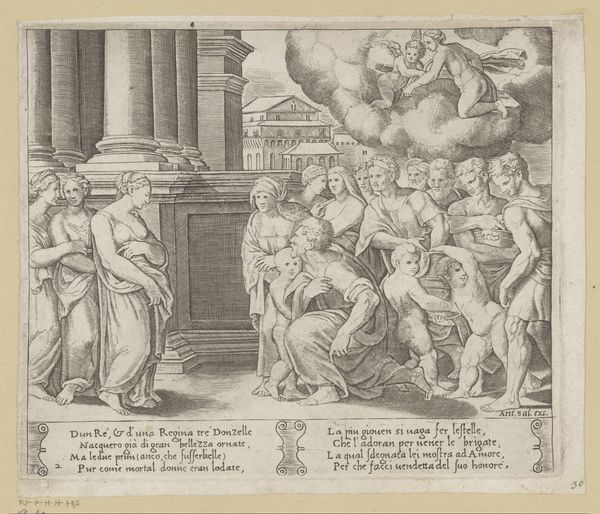
De gerechtvaardigde Mens op de proef gesteld en de dood van de Mens 1546 - 1562
0:00
0:00
franshuys
Rijksmuseum
print, engraving
#
medieval
#
allegory
# print
#
old engraving style
#
figuration
#
history-painting
#
northern-renaissance
#
engraving
Dimensions: height 273 mm, width 361 mm
Copyright: Rijks Museum: Open Domain
Frans Huys created this engraving, “De gerechtvaardigde Mens op de proef gesteld en de dood van de Mens,” sometime in the mid-16th century. The printmaking process, a skilled practice refined over centuries, allowed for the widespread distribution of images and ideas. It was an early form of mass media. The artist would have used a burin to incise lines into a copper plate, applying ink and then pressing the plate onto paper. The material properties of the metal plate, the ink, and the paper all influence the final appearance of the artwork, resulting in precise lines, tonal variation, and rich textures. The act of engraving itself, a labor-intensive practice, imbues the print with social and cultural significance. By embracing printmaking, Huys bridged the gap between fine art and craft, making his allegorical message accessible to a broader audience. The artwork's themes of faith, mortality, and moral judgment resonate deeply, reflecting the socio-political landscape of his time.
Comments
No comments
Be the first to comment and join the conversation on the ultimate creative platform.
